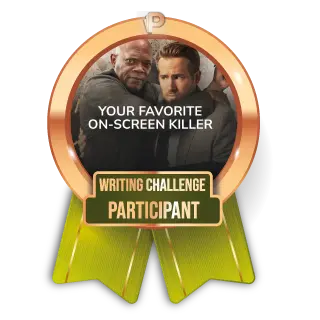
Movies adapted from real stories constitute a distinctive genre within the film industry. Similar to genres like action or science fiction, films based on true events often necessitate a compelling label. Nonetheless, despite being rooted in reality, these movies possess their entertainment and dramatic elements. Even if the events depicted are inherently dramatic, they are frequently embellished to heighten their appeal to audiences.
"Sully" is a film based on the accident of US Airways Flight 1549 on January 15, 2009. Before discussing the movie, let's first acknowledge its formidable lineup. The director is the renowned Clint Eastwood, known for classics like "The Bridges of Madison County." The lead actor is the familiar Tom Hanks, a Hollywood stalwart. However, his recent works have been somewhat lackluster, and interestingly, many of them are related to movies based on real stories, such as "Captain Phillips" and "Bridge of Spies."
The movie is undoubtedly worth recommending. It received high praise in the United States, being considered one of the most critically acclaimed movies recently. It performed well at the box office, and its ratings on domestic and international movie platforms are very high.
The film is based on the events of Flight 1549, a regularly scheduled domestic passenger flight from New York City's LaGuardia Airport to Seattle–Tacoma International Airport in Washington. On January 15, 2009, the Airbus A320-214 operating the route suffered a bird strike shortly after takeoff. Both engines lost power, and the plane lost complete engine power. The cockpit crew, led by Captain Chesley "Sully" Sullenberger, decided to land the aircraft in the Hudson River after realizing they couldn't reach nearby airports. All 155 people on board survived, and the event became known as the "Miracle on the Hudson."

The film has a classical and restrained temperament. It avoids excessive sensationalism and special effects, focusing on post-incident discussions about whether Captain Sully made the most correct judgments and choices. The core of the movie is the interplay between the National Transportation Safety Board (NTSB) and Captain Sully, exploring whether his actions make him a hero or potentially a fraud.
Now, let's compare the plot in the movie to the real events.
At around 3:26 p.m. on January 15, 2009, the plane took off from New York's LaGuardia Airport. However, about a minute after takeoff, Captain Sully reported to the control tower that both engines of the aircraft had lost power due to bird strikes and requested an immediate return to the airport. The airport immediately instructed Flight 1549 to return, but Captain Sully found that he couldn't turn the plane around, so he prepared to land the plane at Teterboro Airport in New Jersey. However, he later discovered that the plane's altitude and descent rate at that time would not allow a safe landing at Teterboro. Therefore, Captain Sully decided to avoid densely populated areas and chose to make an emergency landing on the Hudson River, risking the lives of everyone on board.
These events are authentically portrayed in the movie. However, in the film, the plane's impact on the river is dramatized to the extent that the voices from the control tower are still audible at the last moment. In reality, communication with the tower was lost 23 seconds after Captain Sully informed them of the imminent water landing, which differs slightly from the movie.
After the plane landed on the river, the impact caused the cargo door and the rear door of the aircraft to open, allowing water to rush into the plane almost immediately. At this point, the people on the plane maintained order, allowing young children and women to exit first. Then, they waited on the river for rescue. During this waiting period, everyone stayed in the life rafts without chaotic movements.
In the movie, a man decides to jump into the river because he believes that he is quite close to the shore. However, attempting to swim across the Hudson River in the middle of a New York winter is no easy feat. Additionally, a woman jumps into the water and is eventually rescued by firefighters in a helicopter. These incidents did not take place in real life.
Captain Sully was diagnosed with post-traumatic stress disorder several weeks after the accident. He experienced hallucinations and insomnia, often feeling as though he was falling. The film uses various exaggerated visual effects to realistically depict and showcase these symptoms. The movie begins with a nightmare of Captain Sully attempting to follow the tower's instructions to return to an airport for an emergency landing but failing and crashing into a building. In reality, Captain Sully never had such a dream. This was a special effects showcase at the beginning of the film designed to capture attention.

In the internal investigation by the National Transportation Safety Board (NTSB), the process was much more intricate and detailed than portrayed in the movie. They wanted to examine all your records thoroughly. However, for the sake of increasing drama, the film somewhat portrays the NTSB as in opposition to Captain Sully. The NTSB's questions are portrayed as aggressive, and lacking empathy, and from the outset, they assume that Captain Sully's decision to land on the river made the situation more dangerous for the passengers. In reality, the NTSB's questions to Captain Sully and the co-pilot were reasonable and well-founded. They did not intentionally pick on Captain Sully or dismiss his heroic and calm actions.
When it comes to an aircraft accident, the priority is unequivocally landing on solid ground, while landing on water remains the final option. Consider this: would it be preferable for an aircraft equipped with wheels to land on a well-maintained runway or a soft water surface? Furthermore, if an aircraft does land on water, it tends to sink rapidly within minutes. Importantly, landing on solid ground significantly facilitates subsequent rescue operations. The period after an accident, often referred to as the "golden time," is crucial for passengers' survival, making prompt rescue efforts essential.
In the final public hearing in the movie, online computer simulations and human simulations of the effective state of the dual engines of Flight 1549 were shown. The question was whether the plane could successfully land at two nearby ground airports. Both simulations validated successful landings on ground airports. At this point, Captain Sully became upset, insisting that the aircraft should immediately return to the ground after the bird strike, without accounting for human reaction time. The NTSB added a 35-second reaction time, and as a result, the only viable landing option was determined to be the Hudson River.
This is where the movie and reality differ the most. The movie portrays the NTSB as hostile to Captain Sully, framing them as careless and inconsiderate to highlight Captain Sully's greatness. However, in reality, the NTSB had already considered reaction time and human factors. The entire hearing was serious and rational. In reality, the NTSB also questioned why Captain Sully did not activate the aircraft's water landing system when choosing to land on the river.

Of course, these differences do not diminish the fact that Captain Sully became an American hero because of this aircraft accident.
Overall, the film maintains a remarkably faithful depiction of the actual events. Tom Hanks, in order to portray the real-life Captain's shyness and calmness, keeps his expressions and actions in the film relatively stable, showing a steady performance throughout. The focus of the film is on presenting and contemplating the events rather than letting personal performances overshadow the narrative. This composed acting style adds a documentary flavor to the film.
Many people may wonder why Captain Sully, given that everyone survived, was subjected to such scrutiny. The answer lies in the existence of rigorous organizations, unemotional clauses, and regulatory systems. These mechanisms are crucial for preventing future disasters, gaining experience, and addressing weaknesses.
Questioning itself is often the driving force for progress and discovering the truth. This is especially true for accidents; it is through rigorous investigations and questioning that improvements are made and truths are uncovered.

























































Share your thoughts!
Be the first to start the conversation.